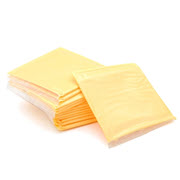|
couldcareless posted:Door to my office at work is a standard hollow core interior door. It appears it is so well balanced and hinges lubricated that the slightest bit of air movement will encourage it to begin to close part of the way, even something as simple as walking past the door will do this. A slide-on draft dodger: https://www.amazon.com/Holikme-Stop...93DJC0GN563576T That'll slow it down.
|
|
|
|

|
| # ? May 30, 2024 21:41 |
|
Two wildly unrelated questions: First, this is probably better in the plumbing thread, but about hot water heaters... our is a ~2009 gas unit the PO installed. Lately it seems like it doesn't provide hot enough water. But it's hit or miss... sometimes it'll be just fine, others it'll barely be 90 at full hot. Time of day has no bearing, sometimes it's like this in the AM, and other times in the PM. What gives? We recently dropped the temperature setting because it was coming out at like 125 sometimes. I don't know if this is a new problem or not, because when it was hotter we never really noticed. I want to say that before we changed the setpoint it would sometimes be hotter than others, but it was always hot enough so I don't know if I was imagining that or if it being so hot masked the problem (which is maybe why PO had it set so hot). For reference, we have never flushed it, but it's a gas unit so my understanding was that this isn't super critical. Second: squeaky floor boards. There are a few in the upstairs hallway, and we don't really have easy access below to shim/glue anything. I looked around and found this thing: https://www.amazon.com/gp/product/B0006IK8YE Is that any good, or something like it? Or is it better to cut a slit through the carpet and drive a real screw in to a joist? Or should I start ripping out the ceiling below...?
|
|
|
|
H110Hawk posted:If you can and do park cars inside your garage, don't prop open the door to your living space to let air exchange. Why not out of curiosity? Did you just mean with the car currently inside the garage or at all?
|
|
|
|
Drunk Driver Dad posted:Why not out of curiosity? Did you just mean with the car currently inside the garage or at all? Just park them outside if you are going to prop the door open. It's an outside carbon monoxide risk if people ever accidentally let them idle. Just paranoia.
|
|
|
|
Ah, I thought so. My garage doesn't have enough room for my car to be in there when I workout anyway. Plus I have a Carbon Monoxide detector in there. Anyway, if I could just get my garage down to even high 80s, I could deal with that when working out. This 100+ poo poo is undoable though. I'm pretty sure most of the heat is radiating from the garage door which faces East, so maybe the insulation would help enough for that.
|
|
|
|
Like others said, insulation will slow down the rate at which the temperature changes, but it won't stop temperature change on its own. It can still be worth doing, but only if you can slow down the change enough to where by the time the garage would start getting really hot, the temperature outside has fallen to comfortable levels. A radiant barrier will reflect sunlight and keep it from affecting the garage at all. It'll be a lot more effective if your problem is afternoon sun, but you may not like the aesthetics. Back in college I know a lot of folks who would tape up aluminum foil in their windows to help regulate temperature on the cheap. Ugly, but it sure was effective.
|
|
|
|
DaveSauce posted:Two wildly unrelated questions: Call a plumber - there are a bunch of different reasons it could be doing that, and it's an older unit. You'll spend a lot of time trying to diagnose and even if you figure it out there's a really good chance that you need a plumber to repair anyways. Just cut to the chase. quote:Second: squeaky floor boards. There are a few in the upstairs hallway, and we don't really have easy access below to shim/glue anything. There are a lot of kits like that, they all work the same way. They can be tricky to get right, but they are the least destructive option. The kicker is - sometimes it is not the floor boards but another part of the assembly, so be ready for the issue not to be ameliorated. Like, in my house at least half the squeaking is from metal strapping installed between the joists where the original nail holding it in place has backed out a little bit, allowing everything to move and squeak when you step on the floor above. Can't fix that with a screw through the floor. Cutting the carpet and driving a 'real' screw won't be any more effective than the snap-off kits. Both methods accomplish the same thing, and the trickiest bit is 'where do I put the screw' (or, 'where do I cut the carpet') for which there are no perfect solutions. You're going to drop a few in the wrong location.
|
|
|
|
Insulate the garage door especially if its getting direct sun. Insulating any other exterior garage walls or ceilings will also help. Sealing airflow around doors and other openings is a very large impact. If you have a water heater or gas clothes dryer in your garage, you may have "suicide vents" in your garage wall. You might assume by the common name that these are to prevent people from dying if they leave their car running in the garage, but its really for ventilation for the appliances. When they burn the gas, the exhaust goes up the exhaust vent outside, but that air in the room has to be replaced. Fresh outside air is good for that. There are codes about how big a room has to be to not need outside venting, and depending on your garage you may be able to seal them off, but you definitely want to keep the carbon monoxide detector if that's the case. DaveSauce posted:
I used this kit and it didn't help at all. It comes with a special screw to help you find the floor joists before you start putting the real screws in. It was easy to do and nothing sticks up through the carpet. But it just didn't solve my problem. But as said, the issue might not be the floor boards attaching to the joists. It certainly wasn't my issue. I read somewhere that it could also be the interaction between the floor and the bottom plate of a nearby wall. The suggestion was to remove the baseboards and drive long screws through the bottom plate into the floor joists. I haven't tried this so I can't say for sure. FogHelmut fucked around with this message at 17:44 on Jun 18, 2021 |
|
|
|
I do have a gas water heater in there, but I haven't noticed any vents. I'm in an HOA so I don't think I could get away with foiling the outside of the door.
|
|
|
|
Tezer posted:Call a plumber - there are a bunch of different reasons it could be doing that, and it's an older unit. You'll spend a lot of time trying to diagnose and even if you figure it out there's a really good chance that you need a plumber to repair anyways. Just cut to the chase. Interesting, I was honestly hoping it was normal for the temp to vary that much and that I should just up the setting. Tezer posted:There are a lot of kits like that, they all work the same way. They can be tricky to get right, but they are the least destructive option. The kicker is - sometimes it is not the floor boards but another part of the assembly, so be ready for the issue not to be ameliorated. Like, in my house at least half the squeaking is from metal strapping installed between the joists where the original nail holding it in place has backed out a little bit, allowing everything to move and squeak when you step on the floor above. Can't fix that with a screw through the floor. Yup, I'm aware that it might not fix the root cause, but for $20 it seems like it's worth a try. The "real screw" thing was because I didn't know if these kits were worth anything. I know functionally a real screw should work the same, I just wasn't sure if the kit actually worked as advertised or if it was a gimmick.
|
|
|
|
DaveSauce posted:Interesting, I was honestly hoping it was normal for the temp to vary that much and that I should just up the setting. There is a lot I don't know about your system - I assume when you say '2009 gas unit' you probably mean a gas-fired tank unit either natural or direct-vented. If the output of a 40-80 gallon tank of hot water is varying by up to 30 degrees and the tank is more than a decade old... the chances of the fix being just turning a dial or adjusting a valve is pretty low. Maybe it's an issue with the tempering valve if you have one, or maybe you're only taking temperature at one fixture and actually the fixture is the issue. There's just a ton of variables and it's an old tank, so chances are you're eventually going to need a plumber. If you'd rather be doing other things than chasing this down, call a plumber, otherwise check out the plumbing thread (maybe you've already posted in there, i'm not caught up): https://forums.somethingawful.com/showthread.php?threadid=3131944 quote:Yup, I'm aware that it might not fix the root cause, but for $20 it seems like it's worth a try. The screws are real, but the problem is sometimes beyond the capability of the screw. If you are worried about getting some weird knock-off screw, most hardware stores have a similar kit. Here is the one carried by Ace Hardware: https://www.acehardware.com/departments/hardware/screws-and-anchors/construction-screws/5106125
|
|
|
|
Well guys, I think my garage door might already be insulated? I went to look at it and there are some sort of foam-type of insert things in there, unless it's just cheap cosmetic stuff rather than real insulation, I dunno. Might be doomed to hot garage, unless I could just cool the house down and open the door to the house and put a fan blowing the air in there. I'd gladly pay an extra 30 or 40 a month in electric to not work out in 110 degree heat.
|
|
|
|
FogHelmut posted:Insulate the garage door especially if its getting direct sun. Insulating any other exterior garage walls or ceilings will also help. Sealing airflow around doors and other openings is a very large impact. I got made fun of in front of and behind my back for wanting to toss insulation in the walls of my garage before putting up drywall. It was 102f outside earlier this week, god forbid I want to have the garage be less unbearable. I'm literally paying you by the day for work, maybe just do it? 99% certain they didn't do it, but life happened and I was out of state with a literal newborn on a few hours notice, when I got back a week or two later the walls were up and painted. I had 0 energy to deal with it. Because I had a 2 week old baby. Drunk Driver Dad posted:I'd gladly pay an extra 30 or 40 a month in electric to not work out in 110 degree heat. The cool kids are putting minisplits in their garage.
|
|
|
|
I just googled those and they look expensive. Would they work a lot better than my portable a/c would? My portable a/c was able to cool the upstairs of my townhouse off very easily, but it didn't do poo poo in the garage the other day, although I didn't realize I had the fan speed set low. I'll try again tomorrow.
|
|
|
|
Drunk Driver Dad posted:I just googled those and they look expensive. Would they work a lot better than my portable a/c would? My portable a/c was able to cool the upstairs of my townhouse off very easily, but it didn't do poo poo in the garage the other day, although I didn't realize I had the fan speed set low. I'll try again tomorrow. It's about a grand to get started no matter how you slice it, and that's with most/all of it DIY'd. Probably closer to $1500. I only brought it up because several people were talking about it. Insulation should help your portable make progress. I would try using it more as a cool breeze generator if you can.
|
|
|
|
The 12k BTU 120v Mr Cool Mini Split is usually $1500, and is good for 500 square feet or so. Right now, Costco seems to have the 24k BTU 240v 30a Mr Cool DIY for $1500, with a delivery time of 1-3 weeks. I did the 12k one, and outside of running a sub panel to my garage because of poor main panel placement, it was pretty easy. Even with the sub panel, wires, supplies, etc I think I was all in under 2300ish, and it cools off pretty quickly after parking my car inside. It only needs a 3" hole through the exterior wall.
|
|
|
|
H110Hawk posted:The cool kids are putting minisplits in their garage. 
|
|
|
|
My garage walls are not insulated but they do have drywall. The rest is sealed up pretty good and my garage door is insulated. Back walls against the house and I think it's insulated. And my bedroom is above the garage so I hope the ceiling is insulated. Anyway the front six feet of my garage has nothing over the top. It's just a flat roof, kind of like a fake balcony outside of my bedroom window. That roof had been leaking for a number of years before I moved in, and the insulation under that had been torn out. After I fixed the roof, I insulated underneath it, sealed all of the air gaps, insulated whatever else I could get to. The garage went from matching the outside temperature to never getting above the low 80s during the day even in the 100s outside. Eventually I plan on insulating the walls. tldr Insulate your garage. Insulate the rest of your house. Insulate your stairs if you want.
|
|
|
|
With paint technology being what it is, is it safe to use an indoor paint primer outdoors and maybe use indoor paint outdoors as well? I have a tiny little wooden lattice that needs a fresh coat, but all I have is indoor paint and primer.
|
|
|
|
Drunk Driver Dad posted:I just googled those and they look expensive. Would they work a lot better than my portable a/c would? My portable a/c was able to cool the upstairs of my townhouse off very easily, but it didn't do poo poo in the garage the other day, although I didn't realize I had the fan speed set low. I'll try again tomorrow. The portables aren't great for a couple of reasons, so probably: https://www.youtube.com/watch?v=_-mBeYC2KGc
|
|
|
|
Bioshuffle posted:With paint technology being what it is, is it safe to use an indoor paint primer outdoors and maybe use indoor paint outdoors as well? I have a tiny little wooden lattice that needs a fresh coat, but all I have is indoor paint and primer. Most interior paints don't have mildewcide in them and even those that are antimicrobial are really just for dealing with a little bathroom or kitchen moisture/ humidity. Also things like less UV resistance and less flexibility to deal with temperature fluctuations outside. It'll look good for a while but how long would depend on the exact paint, how exposed the lattice is, and where you live. At best you're just cleaning it more and repainting it again sooner, at worst it cracks and peels and now you need to strip or sand it all down to get it right again.
|
|
|
|
Thanks! It sounds like it'll be worth making a trip to Home Depot to pick up some exterior paint. What about primer? If I'm going to cover it in a coat of paint anyway, is PVZ indoor primer good enough?
|
|
|
|
Do you mean PVA primer? If so it would really be a waste of time. PVA is good for sealing new drywall and that's about it. If the lattice is already painted and the existing paint is in good shape then I'd just clean it well, scuff sand if it's shiny at all, and do two coats of a good exterior paint. Depending on a lot of other variables, primer usually isn't needed on previously painted surfaces. If the lattice is in direct sun the existing paint may be chalky (just wipe your hand on it and see if chalk comes off on your hand) and you'll want to use a cleaner like TSP or Simple Green to get all of that off before painting.
|
|
|
|
Is there a thread about electric mowers anywhere? I love my little manual push-mower, but it isn't suited for trimming tall grass seed stalks (which I currently have a fuckton of) so I want to get a basic electric or battery mower that will not kill me or break down all the time. I only have 0.15 acres so it doesn't need to be super grunty or long-battery life, but I'm too lazy to mow the whole thing with my strimmer when it is seed season. I'm planning on using it probably once a month if that is relevant in terms of what the expectations are for a battery mower.
|
|
|
|
Corla Plankun posted:Is there a thread about electric mowers anywhere? Mowers, electric and gas usually seem to come up in the tools thread. If you search the thread, you'll probably find a whole bunch of posts about them as the subject seems to come up every other week or so.
|
|
|
|
I have an area of my ceiling where I got rid of a circular flush mount light, so now there is a 12" diameter ring that's a bit lighter than the rest of the ceiling. You can notice it somewhat during the day, not really at not (I don't use a lot of lighting though). There was a small (quarter size) piece of ceiling nearby that was peeling off a bit, so I took that and had a paint match with a flat sheen. I tried putting on part of this area (both dabbing with a regular brush, and also using a rough texture roller) but now it looks way worse! ugh! Any ideas? I don't think those digital paint match tools work that well on rough surfaces. edit: wondering if I should just get a plain ceiling medallion like this and use it in tandem with my outlet concealer https://www.homedepot.com/p/Hampton-Bay-21-in-Smooth-White-Ceiling-Medallion-805134/315274193 actionjackson fucked around with this message at 00:49 on Jun 20, 2021 |
|
|
|
All flat paints are not going to be the same in terms of sheen and gloss level. Cheap clay-based builder and apartment grade interior flats are dead-rear end flat as are many paints specifically marketed for ceilings. Higher quality flat wall paints may be "flat" but not nearly as flat, if that makes sense. So you may just have got it matched in a paint that's not as flat as what's up there. Sheen and gloss difference are a bitch when it comes to trying to match and touch up paints. Fun fact, sheen-level and gloss-level are two different things that are measured at different angles from the surface. You can have two different paints that are both flat or satin or whatever and they could have a very similar or identical sheen but much different gloss levels (or vice versa) and it would look great until you're looking from the wrong angle in the wrong light and the difference sticks out like a sore thumb. What info do you have on the paint from 16 years ago?
|
|
|
|
thanks - all I know is it's white down (benjamin moore). but obviously it will have faded over time. If it was just a small room, I'd consider having someone spray the ceiling, but it's part of a long hallway covering the entry, kitchen and living room which is probably about 650 SF. looking at it some more, I think the medallion is just the best option. there are some that are super light (<1 pound) so it should hold fine being supported by the outlet concealer.
|
|
|
|
Can you show us a picture?
|
|
|
|
H110Hawk posted:Can you show us a picture? in before "that's your ceiling" the outlet concealer is the standard 4" one you find at all the big box stores. The discolored ring is from the light fixture I took down, and you can see there's a segment where I tried to improve it, but it's now worse. 18" is the diameter I need to cover all the mess, so a super basic 19" medallion should work, like this, I think. It's insanely light (0.22 pounds). I can still use some adhesive and caulk I suppose. https://www.architecturaldepot.com/CMPTR.html 
|
|
|
|
actionjackson posted:in before "that's your ceiling" That's your ceiling.  Seriously though the true way to solve it is to just buy ceiling white and put up a coat as far as you can stand it. Matching years faded paint is a fools errand.
|
|
|
|
H110Hawk posted:That's your ceiling. I agree, but I'm asking about the medallion route instead, at the very least something in the interim as I painting the whole ceiling isn't in the budget right now.
|
|
|
|
FogHelmut posted:My garage walls are not insulated but they do have drywall. (My parents actually had the whole house done with urea-formaldehyde foam during the energy crisis. If I suddenly become Spider-Granny, I'll know why.)
|
|
|
|
Go big or go home.
|
|
|
|
i like modernism though which is the complete opposite of anything decorative thank you for the link anyway 
|
|
|
|
actionjackson posted:I agree, but I'm asking about the medallion route instead, at the very least something in the interim as I painting the whole ceiling isn't in the budget right now. Sorry I missed that. Uh, you can't conceal a active box, so if the wires still work in there you have to leave it accessible. This means that you can't adhesive something over it unfortunately. Can you put a fixture back on there? You don't have to put a bulb in it if you don't want light there. Otherwise I guess you could unhook the wires at their source, cap them, and write a note about why and where they go in the box? I don't know if that counts for covering the box.
|
|
|
|
H110Hawk posted:Sorry I missed that. Uh, you can't conceal a active box, so if the wires still work in there you have to leave it accessible. This means that you can't adhesive something over it unfortunately. Can you put a fixture back on there? You don't have to put a bulb in it if you don't want light there. It's going to be accessible whether or not I use adhesive on the medallion, because you can just unscrew the outlet concealer to access it (just like you would if you had a regular fixture in there, which post people use with medallions). https://www.homedepot.com/p/Commercial-Electric-4-3-4-in-White-Ceiling-Outlet-Concealer-81715/306197867 so the medallion which would typically have a 3.5" diameter hole in the middle will be held up by the concealer. For a normal medallion you'd definitely want it super securely attached, but these are just super light <1 lb pvc or plastic medallions.
|
|
|
|
actionjackson posted:It's going to be accessible whether or not I use adhesive on the medallion, because you can just unscrew the outlet concealer to access it (just like you would if you had a regular fixture in there, which post people use with medallions). Yeah knock yourself out if you can open the box.
|
|
|
|
We had some heavy rain a few days ago, and after it stopped I noticed a square foot in the back corner ceiling of my house had taken on a slightly darker color and was damp to the touch. It's since dried out but the color is still there, so tomorrow I'm going to poke around on the outside of that corner and try to determine where the water got in. What should I be looking for in the process?
|
|
|
|

|
| # ? May 30, 2024 21:41 |
|
If you have an attic above that area you can access you may have better luck looking from in there. Water can be coming in from pretty far away from where it ends up. If the water stain is by an outside corner of the house it may be coming in much further up the roof and running down the underside to where it ultimately dripped onto the ceiling.
|
|
|
























